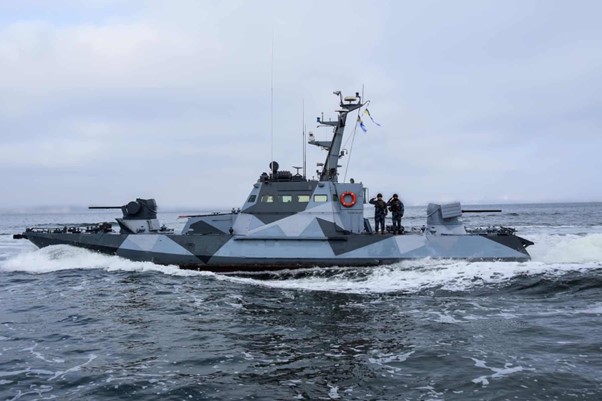The new GMARS system was presented at Eurosatory 2024, one of the largest international defense exhibitions, in Paris. GMARS stands for Global Mobile Artillery Rocket System. The developers describe it as the future for mobile multiple launch rocket systems and claim it can become the key to the rearmament of NATO countries’ armies.
The GMARS is based on the Rheinmetall HX 8x8 wheel chassis which provides for excellent performance at high speeds, overall mobility, reliability, and modularity. The carrying capacity of the Rheinmetall HX 8x8 is about 70 tons. It has proven to be very effective and is among the world’s most massively produced military trucks. As of today, more than 16,000 such trucks have been produced in various modifications for various types of troops and tasks. A 540-horsepower diesel engine allows the vehicle to reach a maximum speed of 100 km/h.
JOIN US ON TELEGRAM
Follow our coverage of the war on the @Kyivpost_official.
Unlike the HIMARS, the GMARS can be equipped with two pods, so the maximum salvo will be up to 12 missiles versus six from the HIMARS. At first glance it may seem that GMARS is a kind of the wheeled M270, which also has two pods, but this is not so. GMARS has completely new missiles that were not previously available for HIMARS and M270 systems.
Yet the new system can use the ammunition of older systems. This is important because MLRS shells and ATACMS missiles have been produced in huge quantities and are currently in military storage. In the conditions of war, the economy of countries plays a decisive role, therefore it is crucial not to waste the manufactured missiles. During the entire existence of HIMARS and M270 systems, more than 700,000 MLRS shells and about 4,000 ATACMS missiles were produced, that is why the developers decided not to abandon the munitions whose production was funded.

Russian Milbloggers Blame ‘Incompetence’ for Ukrainian HIMARS Strike That Destroyed Russian Battalion
A large set of missiles for GMARS
GMARS systems will be able to use JASSM missiles, as well as 122mm unguided missiles.
The manufacturer states that the standard GMLRS ammunition has a range of 70 kilometers, however there will be available ER GMLRS missiles with an extended range, which can hit targets at a distance of up to 150 kilometers. The range of ATACMS missiles will remain unchanged at 300 kilometers, since the features of these missiles will not undergo changes. In addition, the American missile PrSM, which will have a range of up to 500 kilometers, will replace ATACMS missiles. It should also be noted that GMARS is capable of simultaneously launching two ATACMS missiles and four PrSM missiles, as they are smaller and two units can be placed in one launch pod.
In the future, the GMARS developers plan to improve the system and add the ability to fire at least two more types of ammunition. The 122mm rockets will most likely not have sophisticated on-board electronics and will be used within a conventional MLRS system, similar to the Soviet BM-21 Grad. The maximum range of 122mm rockets will be 22 kilometers. The most extended-range weapon of this system will be a family of surface-to-surface cruise missiles converted to launching from GMARS.
The basic version can be the American missile AGM-158 JASSM produced by Lockheed Martin. The range of the AGM-158 JASSM is 370 kilometers, but if GMARS is adapted to newer modifications of this missile, the range can be significantly increased. The modified AGM-158B JASSM-ER with a larger fuel supply and a more economical turbojet engine will fly 980 kilometers. The modern AGM-158 JASSM-XR, whose development is ongoing, will have better stealth technology performance and a range of up to 1,900 kilometers.
The warhead of this cruise missile weighs 450 kilograms. A powerful warhead and a speed of 300 m/s make it possible to penetrate a layer of soil from 6 to 25 meters, as well as reinforced concrete fortifications up to 2 meters thick. Composite materials are widely used in all these missiles, which reduces their detection by air defense radars. The navigation system of the missile is combined. It has an integrated NAVSTAR (Navigation Satellite Time and Ranging) global positioning system (GPS), while infrared homing and automatic target recognition can be used at the terminal phase of the trajectory.
It is worth noting that AGM-158 are primarily air-launched cruise missiles. As for GMARS, the missiles will be modified for surface launches, as a result, the maximum range of the missiles may be reduced. This is due to the specifics of launch from the surface, when the missile spends fuel for lift-off, while during the air launch the carrier aircraft performs this function.
The production of modern weapons, such as GMARS, will require a series of tests, especially performance of the system with the new ammunition. It is not a secret that NATO has already transferred to Ukraine the latest weapons, which are actually being tested in war. Ukrainians are hopeful that the newest GMARS systems are likely to be used in combat too – against Russian forces. This would not only strengthen firepower and expand the capabilities of Ukraine, but also provide important experience and feedback from the use of this system in real combat conditions.
Ukraine would be especially eager to make use of these systems when cruise missiles with a range of 980 and 1,900 kilometers are adapted to them. Such a range would allow hitting any place in the temporarily occupied territory of Ukraine, as well as striking military targets deep in the enemy’s rear.
You can also highlight the text and press Ctrl + Enter










